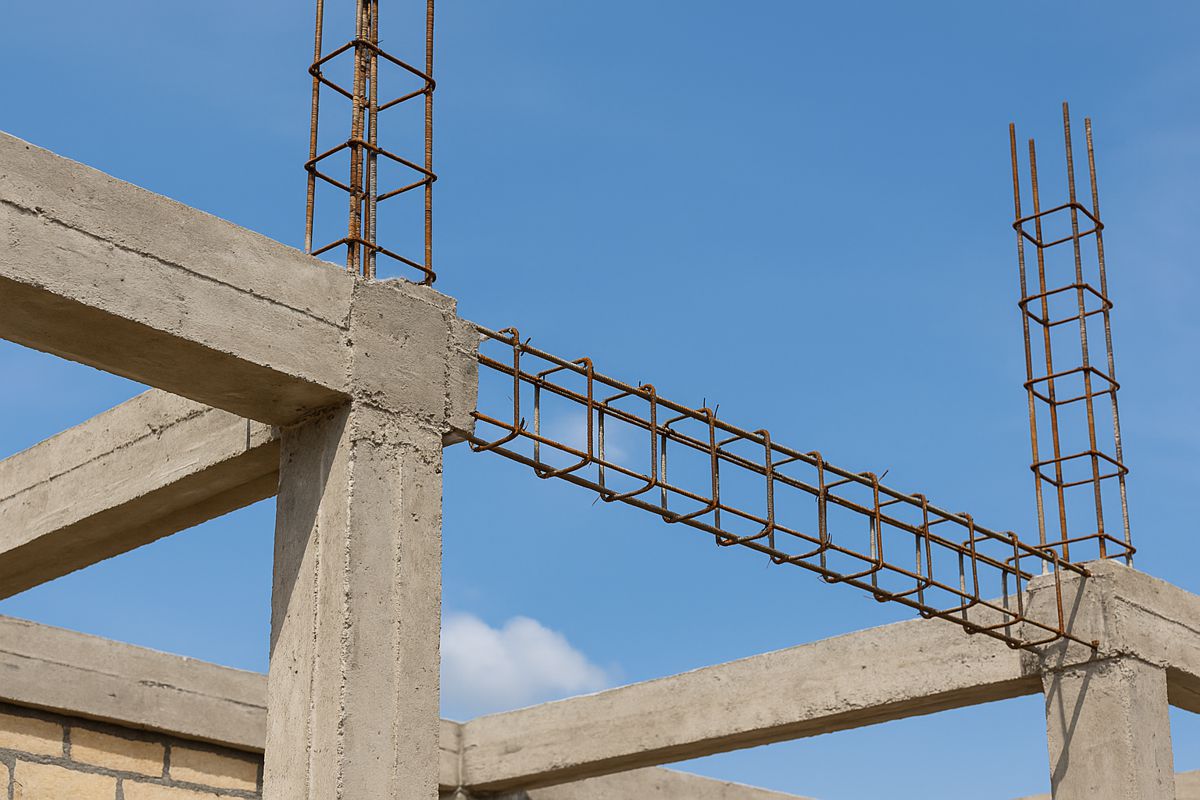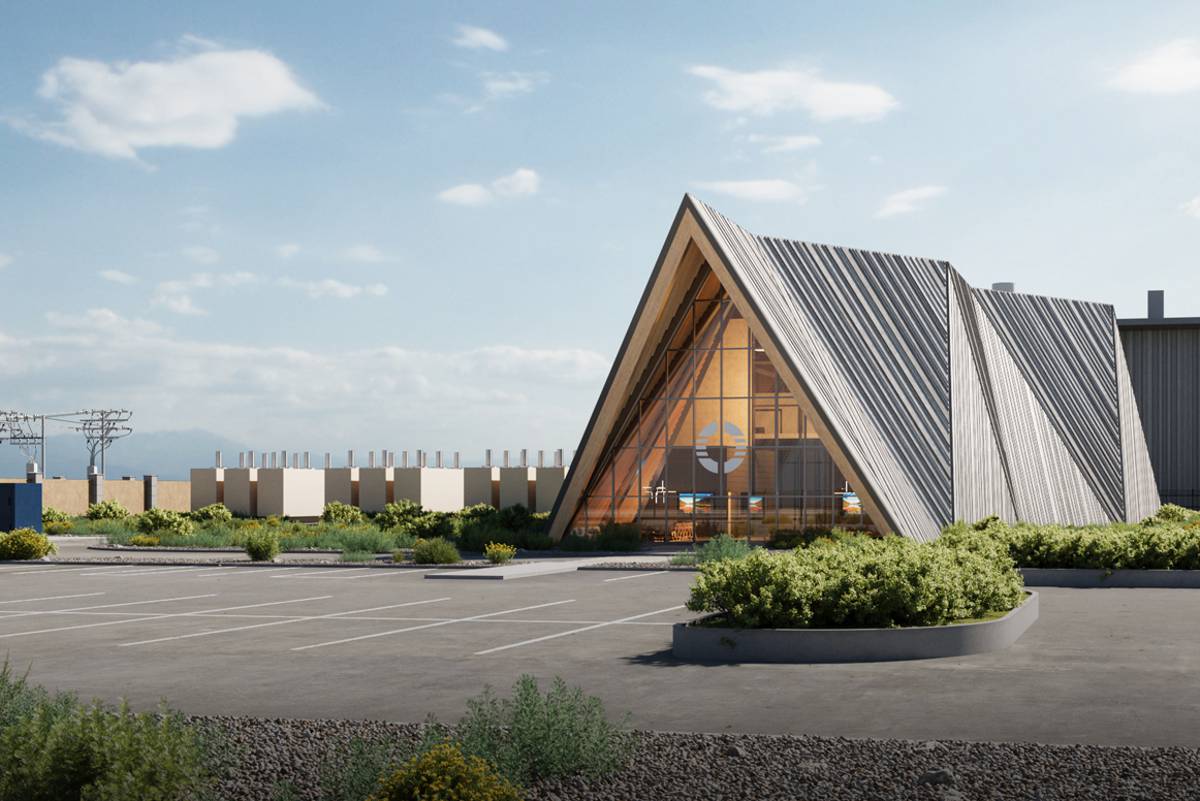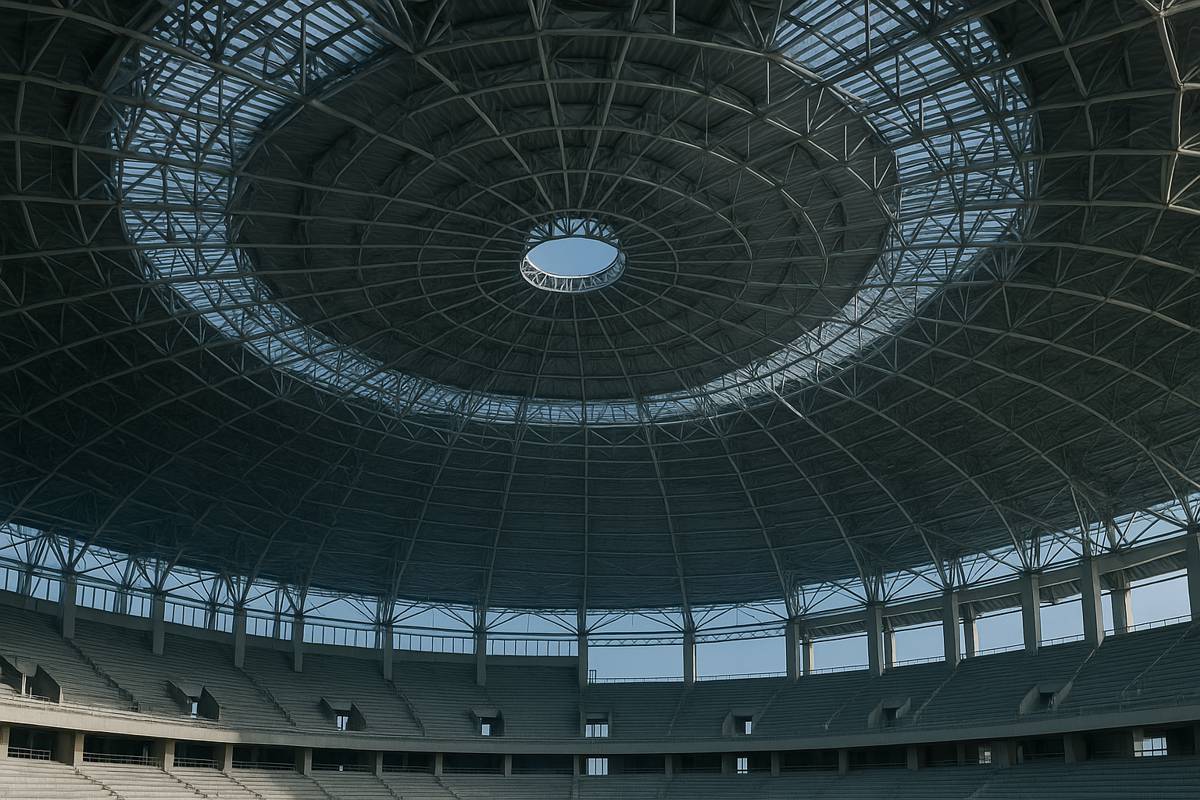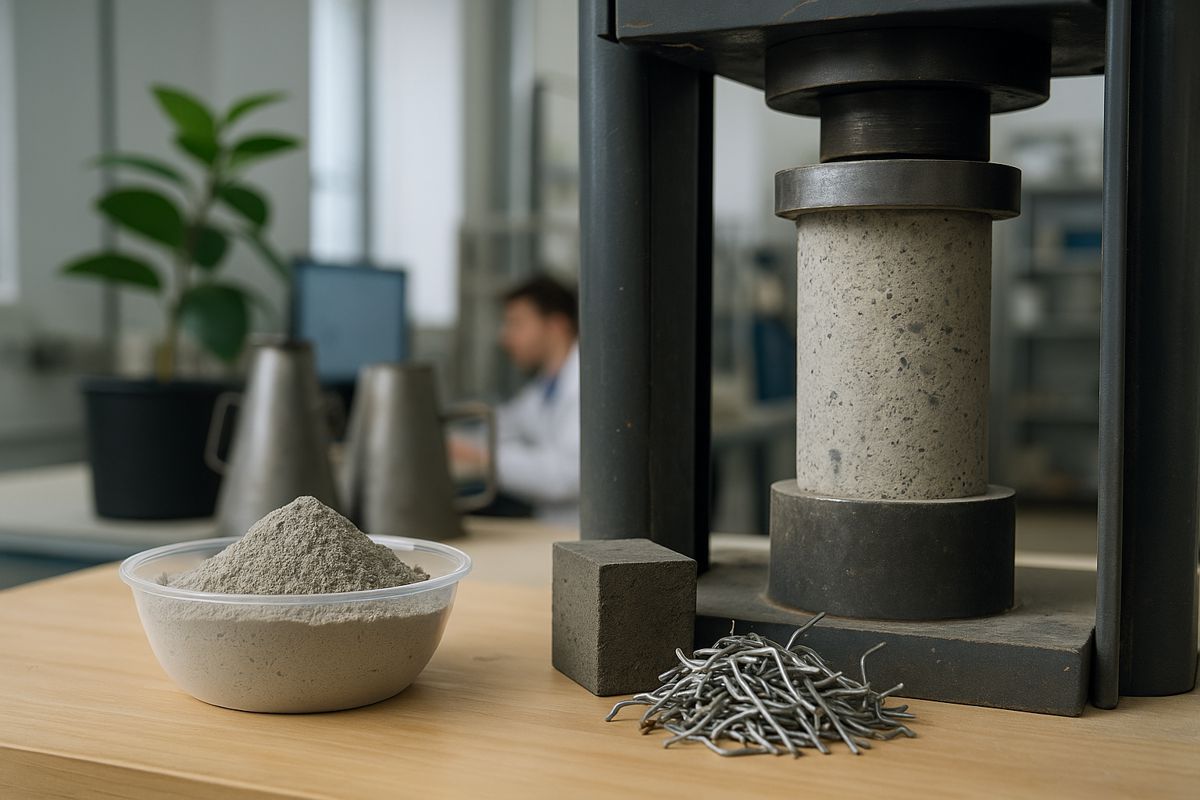Cities are sinking as the ground warms and deforms
There is a “silent hazard” lurking underneath our major global cities, and our buildings were not designed to handle it. A novel study from Northwestern University has established, for the initial instance, a connection between subterranean climate change and the altering terrain beneath metropolitan regions. As the ground warms, it undergoes deformation.
This occurrence induces excessive movement (owing to expansions and contractions) and even fractures in building foundations and the neighbouring ground, thereby impacting the long-term operational efficiency and resilience of structures. Scientists further indicate that previous structural harm might have resulted from escalating temperatures, and they anticipate the persistence of these problems in the future.
While the escalating temperatures do present a risk to our infrastructure, the researchers also perceive it as a prospective chance. Through harnessing the underground waste heat emanating from subterranean transportation systems, parking garages, and basement facilities, urban planners could alleviate the impacts of subterranean climate change and simultaneously exploit this heat as an untapped thermal energy resource.
The research findings are scheduled to be published on July 11 in Communications Engineering, a journal under the Nature Portfolio. This study represents a ground-breaking exploration as it quantifies the deformations in the ground resulting from subsurface heat islands and their consequential impact on civil infrastructure.
Northwestern’s Alessandro Rotta Loria, the study’s lead researcher, emphasized the discreet peril of underground climate change, stating, “Underground climate change is a silent hazard.” He further explained that the ground undergoes deformation due to temperature fluctuations, and currently, no civil structure or infrastructure is engineered to withstand these variations. While this phenomenon may not directly jeopardize people’s safety, it will undoubtedly impact the regular functioning of foundation systems and overall civil infrastructure.
“Similar to numerous other fine-grained soils, Chicago clay has the tendency to contract when subjected to heat,” explained the researcher. “Consequently, due to rising temperatures underground, numerous foundations in the downtown area are experiencing undesirable settlement, albeit at a gradual and continuous pace. This implies that residing in a sinking city is not exclusive to Venice, as the underlying causes of such phenomena may differ entirely.”
What is underground climate change?
In urban areas worldwide, a concerning phenomenon occurs where heat emanates persistently from buildings and underground transportation, resulting in the rapid warming of the ground. Previous studies have revealed that the shallow subsurface beneath cities experiences a temperature increase ranging from 0.1 to 2.5 degrees Celsius per decade.
Referred to as “underground climate change” or “subsurface heat islands,” this phenomenon has been associated with various ecological and health problems. These include issues such as contaminated groundwater and health risks like asthma and heatstroke. However, the impact of underground climate change on civil infrastructure has, until recently, remained unexplored and poorly comprehended.
Rotta Loria elaborated, statin: “When considering basements, parking garages, tunnels, and trains, it becomes evident that all of these structures continuously emit heat.” He further explained that cities, in general, tend to be warmer than rural areas due to the periodic trapping of heat by construction materials, stemming from human activities and solar radiation, which is subsequently released into the atmosphere. This process has been extensively studied over the years. However, the current research delves into its subsurface counterpart, primarily driven by human-induced activities.
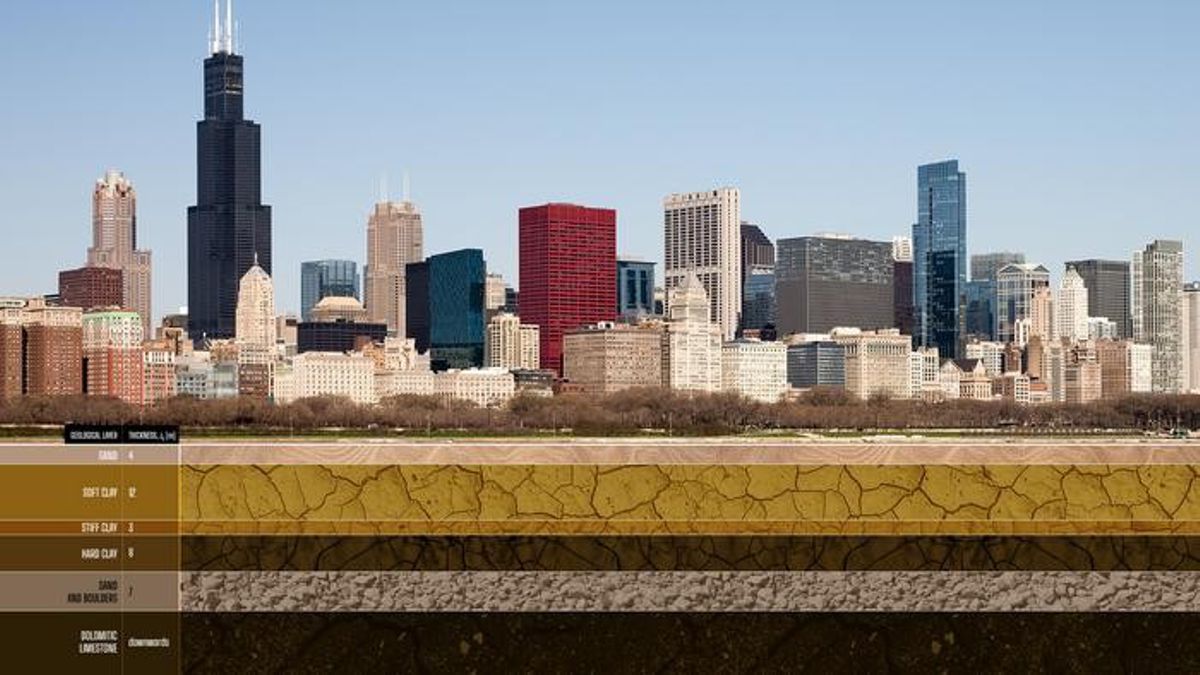
Chicago as a living laboratory
In recent times, Rotta Loria and his research team have undertaken the installation of a wireless network comprising over 150 temperature sensors throughout the Chicago Loop. These sensors were strategically placed both above and below ground, including basements of buildings, subway tunnels, underground parking garages, and subsurface streets like Lower Wacker Drive. As a comparative reference, additional sensors were buried in Grant Park, a greenspace situated along Lake Michigan, far from any buildings or underground transportation systems.
The data collected from the wireless sensing network revealed a noteworthy disparity in temperatures between the underground areas beneath the Loop and Grant Park. Specifically, the underground temperatures beneath the Loop were often found to be approximately 10 degrees warmer than those beneath Grant Park. Moreover, it was observed that air temperatures within underground structures could reach up to 25 degrees higher than the undisturbed ground temperature. This influx of heat into the ground exerts substantial pressure on materials that undergo expansion and contraction as temperatures fluctuate.
Rotta Loria emphasized that while Chicago served as their living laboratory, underground climate change is a widespread phenomenon in densely populated urban areas across the globe. He further stated that any urban area affected by underground climate change is susceptible to infrastructure issues.
Slowly sinking
Following the collection of temperature data over a period of three years, Rotta Loria employed the data to construct a 3D computer model. This model aimed to simulate the progression of ground temperatures from 1951, which marked the completion of Chicago’s subway tunnels, up until the present day. Remarkably, the simulated values aligned with those measured in the field. Utilizing this simulation, Rotta Loria then projected the future evolution of temperatures until the year 2051.
Rotta Loria also simulated how soil warps due to rising temperatures. While certain substances (supple and rigid clay) shrink under heat, different substances (dense clay, sand, and limestone) enlarge.
Based on the simulations, elevated temperatures can trigger a vertical expansion of the ground, reaching up to 12 millimetres. Conversely, they can induce a contraction, causing the ground to sink beneath the weight of a structure, by as much as 8 millimetres. Although this change might appear subtle and undetectable to the human eye, it surpasses the tolerance of numerous building elements and foundation systems, potentially jeopardizing their operational prerequisites.
“Through our computer simulations, we have demonstrated the significant impact of ground deformations on the functionality of civil infrastructure,” stated Rotta Loria. “It is not a sudden collapse of buildings; rather, things sink gradually. The repercussions on the performance of structures and infrastructures can be highly detrimental, although they may take a considerable time to become apparent. It is highly probable that subterranean climate change has already resulted in cracks and excessive foundation settlements that we did not attribute to this phenomenon due to our lack of awareness.”
Harvesting heat
Given that underground climate change emerged after the design of most modern buildings, urban planners and architects did not account for the temperature variations experienced today in their designs. However, compared to structures from earlier historical periods like the Middle Ages, modern buildings are expected to exhibit better resilience and adaptation to these changes.
Rotta Loria noted: “In the United States, buildings are predominantly newer, whereas European cities with ancient structures are more vulnerable to subsurface climate change. Buildings constructed with stone and bricks, following traditional design and construction methods, exist in a fragile balance with the disturbances caused by the present-day activities of cities. The thermal fluctuations associated with subsurface heat islands can have adverse effects on these constructions.”
Looking ahead, Rotta Loria emphasized the importance of incorporating geothermal technologies into future planning strategies. These technologies can capture and utilize waste heat, providing it to buildings for space heating purposes. Additionally, planners can enhance buildings, both new and existing, by installing thermal insulation to reduce the influx of heat into the ground. These measures aim to mitigate the impact of subsurface climate change and ensure more sustainable and energy-efficient urban environments.
Rotta Loria emphasized that the optimal and logical approach involves effectively isolating underground structures to minimize heat wastage. If complete isolation is not feasible, geothermal technologies provide a viable option for efficiently capturing and reusing heat in buildings. However, it is important to avoid actively cooling underground structures, as this would consume additional energy. Presently, there exist numerous solutions that can be implemented to address these challenges and optimize the management of subsurface climate change.
The research study titled “The silent impact of underground climate change on civil infrastructure” received support from the National Science Foundation under grant number 2046586. The wireless sensing network, which played a crucial role in this study and also serves as a live laboratory for a course taught by Rotta Loria, received partial support from the Murphy Society and the Alumnae of Northwestern University.












